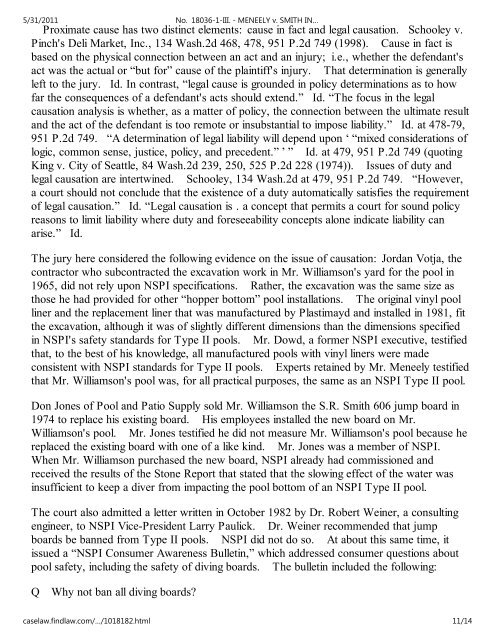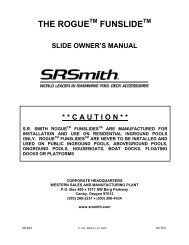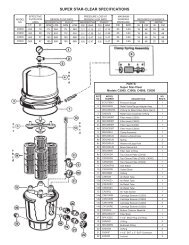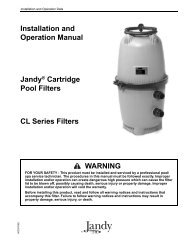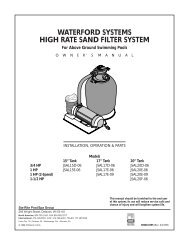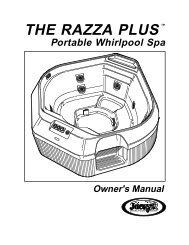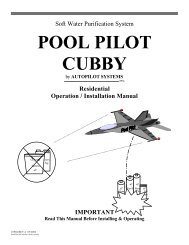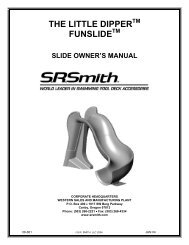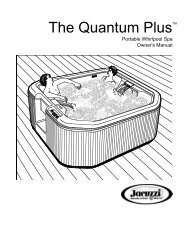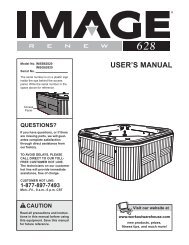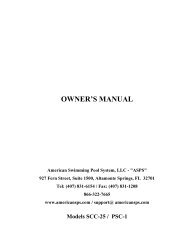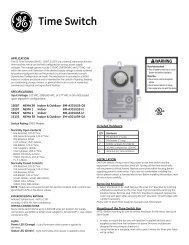Meneely v Smith - Rick English - Swimming Pool Consultant
Meneely v Smith - Rick English - Swimming Pool Consultant
Meneely v Smith - Rick English - Swimming Pool Consultant
You also want an ePaper? Increase the reach of your titles
YUMPU automatically turns print PDFs into web optimized ePapers that Google loves.
5/31/2011 No. 18036-1-III. - MENEELY v. SMITH IN…Proximate cause has two distinct elements: cause in fact and legal causation. Schooley v.Pinch's Deli Market, Inc., 134 Wash.2d 468, 478, 951 P.2d 749 (1998). Cause in fact isbased on the physical connection between an act and an injury; i.e., whether the defendant'sact was the actual or “but for” cause of the plaintiff's injury. That determination is generallyleft to the jury. Id. In contrast, “legal cause is grounded in policy determinations as to howfar the consequences of a defendant's acts should extend.” Id. “The focus in the legalcausation analysis is whether, as a matter of policy, the connection between the ultimate resultand the act of the defendant is too remote or insubstantial to impose liability.” Id. at 478-79,951 P.2d 749. “A determination of legal liability will depend upon ‘ “mixed considerations oflogic, common sense, justice, policy, and precedent.” ’ ” Id. at 479, 951 P.2d 749 (quotingKing v. City of Seattle, 84 Wash.2d 239, 250, 525 P.2d 228 (1974)). Issues of duty andlegal causation are intertwined. Schooley, 134 Wash.2d at 479, 951 P.2d 749. “However,a court should not conclude that the existence of a duty automatically satisfies the requirementof legal causation.” Id. “Legal causation is ․ a concept that permits a court for sound policyreasons to limit liability where duty and foreseeability concepts alone indicate liability canarise.” Id.The jury here considered the following evidence on the issue of causation: Jordan Votja, thecontractor who subcontracted the excavation work in Mr. Williamson's yard for the pool in1965, did not rely upon NSPI specifications. Rather, the excavation was the same size asthose he had provided for other “hopper bottom” pool installations. The original vinyl poolliner and the replacement liner that was manufactured by Plastimayd and installed in 1981, fitthe excavation, although it was of slightly different dimensions than the dimensions specifiedin NSPI's safety standards for Type II pools. Mr. Dowd, a former NSPI executive, testifiedthat, to the best of his knowledge, all manufactured pools with vinyl liners were madeconsistent with NSPI standards for Type II pools. Experts retained by Mr. <strong>Meneely</strong> testifiedthat Mr. Williamson's pool was, for all practical purposes, the same as an NSPI Type II pool.Don Jones of <strong>Pool</strong> and Patio Supply sold Mr. Williamson the S.R. <strong>Smith</strong> 606 jump board in1974 to replace his existing board. His employees installed the new board on Mr.Williamson's pool. Mr. Jones testified he did not measure Mr. Williamson's pool because hereplaced the existing board with one of a like kind. Mr. Jones was a member of NSPI.When Mr. Williamson purchased the new board, NSPI already had commissioned andreceived the results of the Stone Report that stated that the slowing effect of the water wasinsufficient to keep a diver from impacting the pool bottom of an NSPI Type II pool.The court also admitted a letter written in October 1982 by Dr. Robert Weiner, a consultingengineer, to NSPI Vice-President Larry Paulick. Dr. Weiner recommended that jumpboards be banned from Type II pools. NSPI did not do so. At about this same time, itissued a “NSPI Consumer Awareness Bulletin,” which addressed consumer questions aboutpool safety, including the safety of diving boards. The bulletin included the following:Q Why not ban all diving boards?caselaw.findlaw.com/…/1018182.html 11/14


